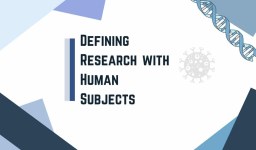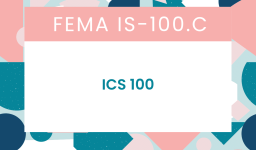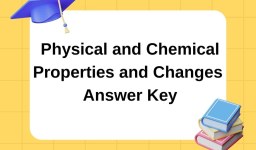The Health Education Systems, Inc. Admissions Assessment (HESI A2) test is a standardized examination that is often used by nursing schools as part of their admissions process. The test is designed to assess the academic and personal readiness of prospective nursing students.
HESI A2 consists of various sections that test knowledge in different areas. These areas typically include English Language (Reading Comprehension, Vocabulary, and Grammar), Math, Biology, Chemistry, Anatomy & Physiology, and Learning Style and Personality Profile assessments. The specific sections a student needs to take can vary depending on the requirements of the particular nursing school.
The purpose of the HESI A2 test is to evaluate whether a prospective nursing student has the knowledge and capacity to succeed in a demanding nursing program. It provides an objective measure for nursing schools to evaluate applicants beyond their academic grades and extracurricular activities.
The HESI A2 test is significant because a good score can significantly enhance an applicant’s chances of being accepted into competitive nursing programs.
Moreover, the test provides feedback about the applicant’s strengths and weaknesses in key areas, allowing them to know where they need to focus their study efforts.
Sample Questions and Answers
In this section, we will walk through a few sample questions from various sections of the HESI A2 test. For each question, we will provide the correct answer along with an explanation and a discussion on why the other choices are incorrect.
English Language Section
Question: Identify the misspelled word in the following sentence: “She was exstatic about the unanticipated gift.”
Answer: The correct spelling is “ecstatic,” not “exstatic.”
Explanation: In English, the word “ecstatic” means to express overwhelming happiness or joyful excitement.
Incorrect Choices: The rest of the words are correctly spelled.
Question: Select the correctly punctuated sentence:
A. Its raining outside and, I forgot my umbrella.
B. Its raining outside, I forgot my umbrella.
C. It’s raining outside, and I forgot my umbrella.
D. It’s raining, outside and I forgot my umbrella.
Answer: C. It’s raining outside, and I forgot my umbrella.
Explanation: This sentence uses correct punctuation and grammar. It correctly uses the contraction “It’s” (it is) and correctly places the comma before the conjunction “and” in a compound sentence.
Mathematics Section
Question: Solve the following problem: (8+2) ÷ 2 = ?
Answer: 5
Explanation: According to the order of operations (PEMDAS/BODMAS), parentheses/brackets are addressed first, so we add 8 + 2 to get 10. Then, we divide 10 by 2 to get 5.
Incorrect Choices: Any number other than 5 disregards the order of operations.
Question: If a car travels 60 miles in 2 hours, what is its speed in miles per hour?
Answer: 30 miles per hour
Explanation: Speed is calculated by dividing the distance by time. Here, the car covers a distance of 60 miles in 2 hours, so its speed is 60 miles ÷ 2 hours = 30 miles per hour.
Incorrect Choices: Any number other than 30 disregards the basic formula for speed.
Question: If a jacket costs $70 and is reduced by 15% during a sale, what is the new price of the jacket?
A. $59.50 B. $60.00 C. $55.00 D. $65.00
Answer: A. $59.50
Explanation: To calculate the new price, you need to determine the amount of the reduction first. 15% of $70 is $10.50. Subtract this amount from the original price to find the new price: $70 – $10.50 = $59.50.
Incorrect Choices: B, C, D: These are all incorrect calculations of the 15% reduction.
Science Section
Question: Which of the following is a characteristic of water?
A. Nonpolar B. Acidic C. Polar D. Basic
Answer: C. Polar
Explanation: Water is a polar molecule because it has uneven distribution of charge. The oxygen atom is more electronegative, attracting more electrons and giving it a slightly negative charge, while the hydrogen atoms are slightly positive.
Incorrect Choices: A. Water is not nonpolar, it is polar due to the uneven distribution of charge. B. & D. Water is neither acidic nor basic. It is neutral with a pH of 7.
Question: Which organelle is responsible for energy production in cells?
A. Endoplasmic Reticulum B. Mitochondria C. Nucleus D. Golgi Apparatus
Answer: B. Mitochondria
Explanation: The mitochondria, often referred to as the “powerhouse of the cell,” is responsible for producing energy in the form of ATP (adenosine triphosphate).
Incorrect Choices: A. The endoplasmic reticulum is involved in protein and lipid synthesis. C. The nucleus is the control center of the cell and contains genetic material. D. The Golgi apparatus is involved in modifying, sorting, and packaging macromolecules for cell secretion or for use within the cell.
Anatomy and Physiology Section
Question: The smallest unit of life is:
A. An organ B. A cell C. A tissue D. A system
Answer: B. A cell
Explanation: The cell is the smallest unit of life that can perform all life processes.
Incorrect Choices: A. An organ is a group of tissues that perform a specific function or group of functions. C. A tissue is a group of similar cells that work together to perform a particular function. D. A system refers to a group of organs working together to perform complex related functions.
Question: Which system of the human body is responsible for transporting nutrients, oxygen, and hormones to cells?
A. Nervous System
B. Digestive System
C. Circulatory System
D. Respiratory System
Answer: C. Circulatory System
Explanation: The circulatory system, also known as the cardiovascular system, is responsible for transporting nutrients, oxygen, hormones, and other substances to and from cells.
Incorrect Choices: A. The nervous system is responsible for controlling body activities and maintaining homeostasis. B. The digestive system is responsible for breaking down food into nutrients, which the body uses for energy, growth, and cell repair. D. The respiratory system is involved in the intake and exchange of oxygen and carbon dioxide between an organism and the environment.
Question: What is the primary function of the respiratory system?
A. To pump blood throughout the body B. To control the body’s movements C. To regulate the body’s temperature D. To facilitate gas exchange
Answer: D. To facilitate gas exchange
Explanation: The primary function of the respiratory system is to facilitate gas exchange, or the intake of oxygen and the expulsion of carbon dioxide.
Incorrect Choices: A. Pumping blood throughout the body is the function of the circulatory system. B. Controlling the body’s movements is primarily the function of the muscular and nervous systems. C. Regulating the body’s temperature is a function mainly associated with the integumentary system (skin) and hypothalamus in the brain.
Vocabulary and General Knowledge Section
Question: Select the correct definition of the term “ubiquitous”.
A. Rarely occurring B. Universally or widely occurring C. Existing in one place only D. Able to speak multiple languages
Answer: B. Universally or widely occurring
Explanation: “Ubiquitous” refers to something that is found everywhere or appears to be present in many places at the same time.
Incorrect Choices: A. “Rarely occurring” is the opposite of “ubiquitous”. C. “Ubiquitous” indicates a widespread presence, not a single location. D. The ability to speak multiple languages is referred to as “multilingual”.
Reading Comprehension Section
Question: Read the following passage and answer the question below:
“Volcanoes are fascinating natural phenomena. They spew molten rock from the earth’s mantle, creating new land formations and drastically changing landscapes. Volcanic activity can also have a significant impact on the earth’s climate, as it releases large amounts of sulfur dioxide into the atmosphere.”
Which of the following best summarizes the passage?
A. Volcanoes create new landscapes and influence the earth’s climate. B. Volcanoes only bring about destructive changes to the landscape. C. The earth’s climate solely depends on volcanic activity. D. Sulfur dioxide is the main component of the earth’s atmosphere.
Answer: A. Volcanoes create new landscapes and influence the earth’s climate.
Explanation: This choice accurately summarizes the passage, which discusses the role of volcanoes in shaping landscapes and impacting climate.
Incorrect Choices: B. The passage states that volcanoes create new land formations, which is not necessarily destructive. C. While the passage mentions the impact of volcanoes on climate, it does not imply that the earth’s climate solely depends on this. D. The passage doesn’t suggest that sulfur dioxide is the main component of the earth’s atmosphere.
Basic Chemistry Section
Question: Which of the following best describes the term “covalent bond”?
A. An interaction between ions of opposite charge B. A bond formed by the transfer of electrons from one atom to another C. A bond formed by the sharing of electrons between atoms D. A bond that involves the sharing of protons between atoms
Answer: C. A bond formed by the sharing of electrons between atoms
Explanation: Covalent bonds are formed when two atoms share one or more pairs of electrons, thereby filling their outer electron shells and creating a stable molecule.
Incorrect Choices: A. An interaction between ions of opposite charge describes an ionic bond, not a covalent bond. B. A bond formed by the transfer of electrons from one atom to another also describes an ionic bond. D. Bonds do not involve the sharing of protons.
Structure of the HESI A2 Test
The HESI A2 test is divided into several sections, each designed to assess knowledge and skills in specific areas. These sections often include:
- English Language: This area is further divided into Reading Comprehension, Vocabulary, and Grammar.
- Math: This section tests basic mathematical skills.
- Biology: It assesses the applicant’s understanding of basic biological principles.
- Chemistry: The test focuses on the basic understanding of key chemistry concepts.
- Anatomy & Physiology: This section aims to test an applicant’s knowledge about the structure and function of the human body.
- Learning Style: This part of the test identifies the applicant’s preferred learning style to help them develop more effective study strategies.
- Personality Profile: It provides insights into the applicant’s personality characteristics that may impact their learning and interaction in a healthcare setting.
Each section comprises multiple-choice questions. The number of questions and the time allocated for each section can vary, but generally, there are between 25 to 50 questions per section, and the test-taker is given around 2 hours in total to complete the exam.
Detailed Explanation of Each Section
English Language:
- Reading Comprehension: This section measures a student’s ability to understand and draw conclusions from written materials. It often includes passages followed by questions about the main idea, details, inferences, and implications.
- Vocabulary: This part of the test assesses a student’s understanding of common words and phrases used in healthcare settings.
- Grammar: The grammar section focuses on fundamental aspects of English grammar, such as parts of speech, important terms and their uses, and common grammatical errors.
Math: This section tests basic mathematical skills, including basic calculations, fractions, percentages, ratios, and word problems.
Biology: The biology section evaluates the student’s understanding of basic biological concepts, including cell biology, metabolism, genetics, and basic biochemistry.
Chemistry: This section focuses on the basic understanding of chemistry, including atomic structure, chemical equations and reactions, the periodic table, and chemical bonding.
Anatomy & Physiology: This section is designed to assess an applicant’s knowledge of the human body’s structure and function, covering systems such as the cardiovascular, respiratory, gastrointestinal, and musculoskeletal systems.
Learning Style and Personality Profile: These sections do not contribute to the total score but provide useful information for the student. The Learning Style section helps identify an individual’s preferred learning style, while the Personality Profile gives insights into personality traits that can impact learning and communication in a healthcare environment.
Strategies for Studying and Preparation
Best Study Practices
Successful preparation for the HESI A2 test involves dedicated studying and effective use of resources. Below are some of the best practices:
- Plan Your Study Schedule: Start by assessing the amount of material you need to cover and allocate sufficient time for each section. Make a detailed study schedule and stick to it.
- Use Study Guides: Numerous HESI A2 study guides are available that provide a comprehensive review of all topics covered in the test. These guides often include practice tests and questions to help you familiarize yourself with the test format.
- Review Class Notes: Your previous coursework in English, math, biology, chemistry, and anatomy & physiology is a valuable resource. Reviewing these notes can help refresh your memory and reinforce concepts.
- Practice Regularly: Practice is key to acing the test. Regularly solving practice questions and tests can help you get comfortable with the question format, improve speed, and identify areas of weakness.
- Online Resources: There are several online platforms offering study materials, flashcards, and practice tests. Use them to diversify your study resources and for convenient studying.
Tips for Time Management and Reducing Test-Taking Anxiety
Test-taking can often induce anxiety, and effective time management is a crucial part of dealing with it. Here are some tips to help you manage your time and reduce anxiety during the test:
- Familiarize Yourself with the Test Format: Knowing the structure of the test, types of questions, and time limits for each section can help reduce anxiety and aid in time management.
- Practice Under Test Conditions: Simulate test conditions during your practice sessions. This not only helps with time management but also gets you accustomed to the pressure of a timed test, thus reducing anxiety.
- Prioritize Questions: During the test, quickly skim through all the questions and start by answering the ones you find easiest. This strategy ensures that you score maximum points in the least amount of time.
- Stay Healthy: Regular exercise, a balanced diet, and adequate sleep are crucial for managing stress and maintaining focus during your study and on the test day.
- Relaxation Techniques: Techniques like deep breathing, meditation, and yoga can help reduce test-related anxiety and keep you calm on the test day.
- Stay Positive: A positive mindset can significantly impact your performance. Believe in your preparation, stay motivated, and don’t let the pressure overwhelm you.
Resources for Further Practice
Recommended Textbooks, Online Resources, and Practice Tests
Expanding your study resources can significantly improve your preparation. Here are some recommended textbooks, online resources, and practice tests for HESI A2:
- Textbooks:
- “HESI Admission Assessment Exam Review,” by HESI: This official guide provides complete content coverage, test tips, and sample questions.
- “HESI A2 Secrets Study Guide,” by Mometrix: This comprehensive guide includes in-depth explanations for each answer, helping you understand the logic behind them.
- Online Resources:
- Mometrix Test Preparation: This website offers a comprehensive selection of study guides, flashcards, and practice questions.
- Quizlet: It has numerous user-generated flashcard sets covering the different sections of the HESI A2 test.
- Khan Academy: Although not HESI A2 specific, the Khan Academy offers a vast resource for reviewing concepts in math, science, and English.
- Practice Tests:
- Pocket Prep’s HESI A2 App: This mobile app offers practice questions and tests, customizable study plans, and progress tracking.
- HESI A2 Practice Test by TestGuide: This website offers free practice tests for each section of the HESI A2.
How to Use These Resources Effectively
While having various resources can be beneficial, it’s essential to use them effectively:
- Plan Your Study: Allocate specific times to textbooks reading, online resource practice, and practice tests. Make sure you’re not just memorizing answers, but understanding concepts.
- Focus on Weak Areas: Use the resources to improve your weak areas. For example, if you’re struggling with math, spend extra time practicing math problems and reviewing related concepts.
- Regular Review: Regularly review all topics to retain information. Use flashcards and quick quizzes for this purpose.
- Simulate Test Conditions: When taking practice tests, simulate the conditions of the actual test. This will help improve your time management and reduce test anxiety.
- Track Your Progress: Use resources like the Pocket Prep’s HESI A2 App to track your progress and identify areas that need improvement.
Remember, these resources are tools to help you prepare. It’s the consistent study, regular practice, and understanding of concepts that will ultimately lead to success in the HESI A2 test.



